

American mastodon (Mammut americanum) had large tusks and short, dense hair that covered their bodies to protect them from the intense cold of Pleistocene North America. Stocky and rather muscular, a typical mastodon would have been about 8 to 10 feet at the shoulder, and weighed about 8,000-10,000 lbs, with males outweighing females.


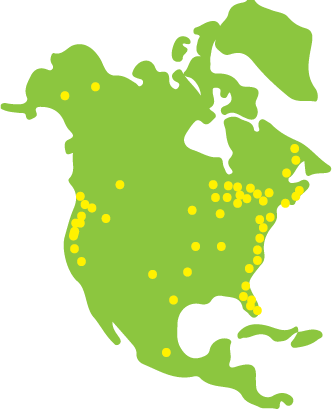
American mastodon fossils date from the early middle Pliocene epoch (approximately 3.7 million years ago) and have been discovered throughout North America from Alaska to Florida and as far south as central Mexico.

Based on the locations where they have been found, and from scientific examination of chemicals found in their teeth and bones, American mastodon preferred to live in wooded areas where they could easily browse on their favorite foods such as coniferous leaves, twigs, and shrubs. Research shows that mastodon in New York State favored plants like spruce and pine.

American mastodon most likely lived in small mixed herds that included adult females and their young. Males, upon reaching sexual maturity at about the age of 10, would then separate from the herd and live a more solitary life.


Thirty-eight million years ago, Mammoth and American mastodon shared a common ancestor named Paleomastodon. However, around 24 million years ago, the mastodon family (Mammut) diverged from the family tree and evolved separately from the species that eventually lead to the Elephantidae family (from which stem mammoth and modern-day Asian and African elephants).
American Mastodon
Paleomastodon
Woolly Mammoth
Asian Elephant

Mammut
Elephantidae
African Elephant



At first glance, it is easy to see why American mastodon are often confused with Woolly Mammoth. Both species resembled large, fuzzy elephants with big tusks and small ears and lived in North America at some point during the Ice Age. However, closer examination reveals striking differences between these two hairy behemoths.
Physically, American mastodon were smaller than both Mammoths and today's modern African Elephants. They also had a much lower profile, with their skulls aligning with their spines in contrast with the mammoths' high, peaked head. Additionally, mastodon tusks tended to be long with only a slight curve, whereas the massive Mammoth tusks assumed more of a corkscrew curve that twisted in two directions.


Although both were herbivores (plant-eaters), American mastodon and mammoth had very different tastes in food.
Mastodon were mixed grazers and browsers, favoring foods on the crunchy-side, including twigs, shrubs, low-lying tree branches, and even pine needles!


Mammoth, on the other hand, were grazers and preferred to snack on tundra grasses, lichen, shrubs, and herbs.
Mammoth Food:
Tundra grasses and lichen
The differences in their diets meant that, for the most part, the two species did not have to compete for food resources.

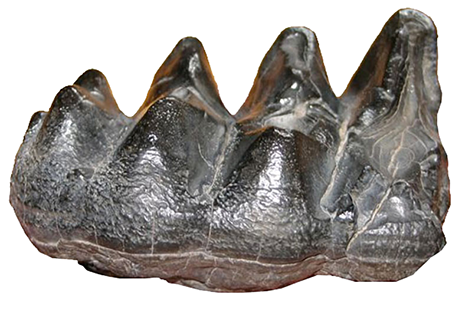
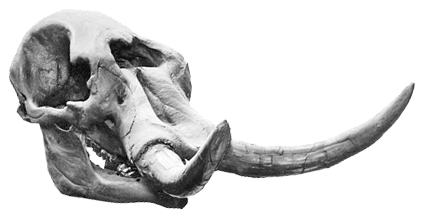

The molars of mastodon had deep cusps that were used to chew and crush all the crunchy flora they loved to eat.
Similar to modern elephants, the teeth of Woolly Mammoth were flat and covered in ridges of enamel that would grind and pulverize grasses and lichens in a forward/backward sliding motion.

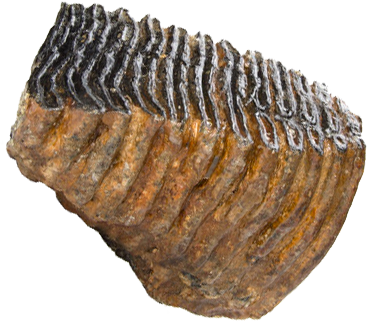




Mastodon Food:
Pine needles and twigs
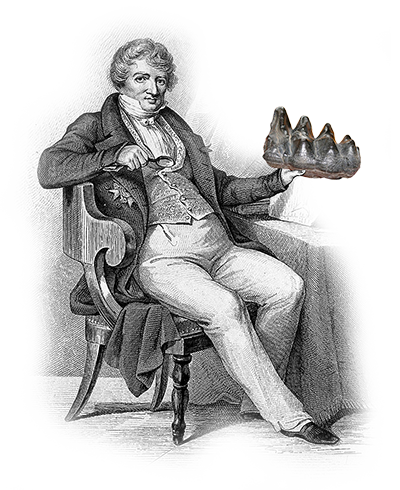


Did you know that mastodon were named after the shape of their teeth? Although the official scientific term describing the American mastodon is Mammut americanum, scientists often default to using the common name, mastodon, as coined by French Naturalist Georges Cuvier in 1817. Derived from the Greek words mastos (breast) and odous (tooth), the name mastodon, or "breast-tooth," refers specifically to the nipple-esque shapes of the animal's molars.

Why did mastodon, mammoth, and many other large mammals become extinct about 10,000 years ago, while other animals did not? This question has puzzled researchers for over 100 years. One explanation is that climatic changes caused their habitat to shrink in size. Coinciding with a low birthrate, environmental stress made these mammals especially vulnerable to predation and disease. Perhaps, like mammoth, mastodon were also hunted by early American Indians.




 |
 |
|
| Office of Cultural Education New York State Education Department Information: 518-474-5877 Contact Us | Image Requests | Terms of Use |
||